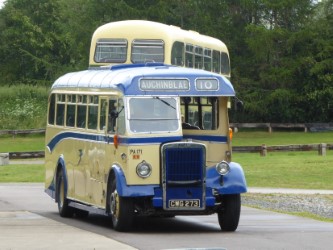The History
From the early 1930s, the rapidly expanding Alexander company had been an enthusiastic customer for Leyland vehicles. This enthusiasm continued in post war years when over 200 of Leyland’s post war single deck PS1 chassis design were taken into stock between 1947 and 1950 as the “PA” class. Almost all of these had the company’s own B35F bodywork which was then produced in Stirling.
The company had been part of the Scottish Motor Traction combine since the late 1920s, the SMT combine being 50% owned by two of the country’s main railway companies. Following nationalisation of the railway industry in 1948, the bus operating part of the company came into the state sector, the coachbuilding side of the business continuing as an independent concern. This transfer caused an interruption for a time in the supply of steel for constructing the framing of bodywork. This difficulty was eventually resolved and PA171 has steel framed bodywork. Alexander had been producing steel framed bodywork since the 1930s.
The PA class was used across the whole of Alexander’s operating territory, PA171 being allocated to Aberdeen depot when new in August 1950. A transfer to Stonehaven depot came in 1956 where it remained until withdrawn in 1971 when the company had a mass clear-out of the surviving vehicles of this type. It was replaced by cascaded vehicles suitable for driver only operation as the Alexander company started in earnest to dispense with the services of conductors and conductresses.
PA171 was bought for preservation when it came out of service and eventually came into the care of the Trust.

